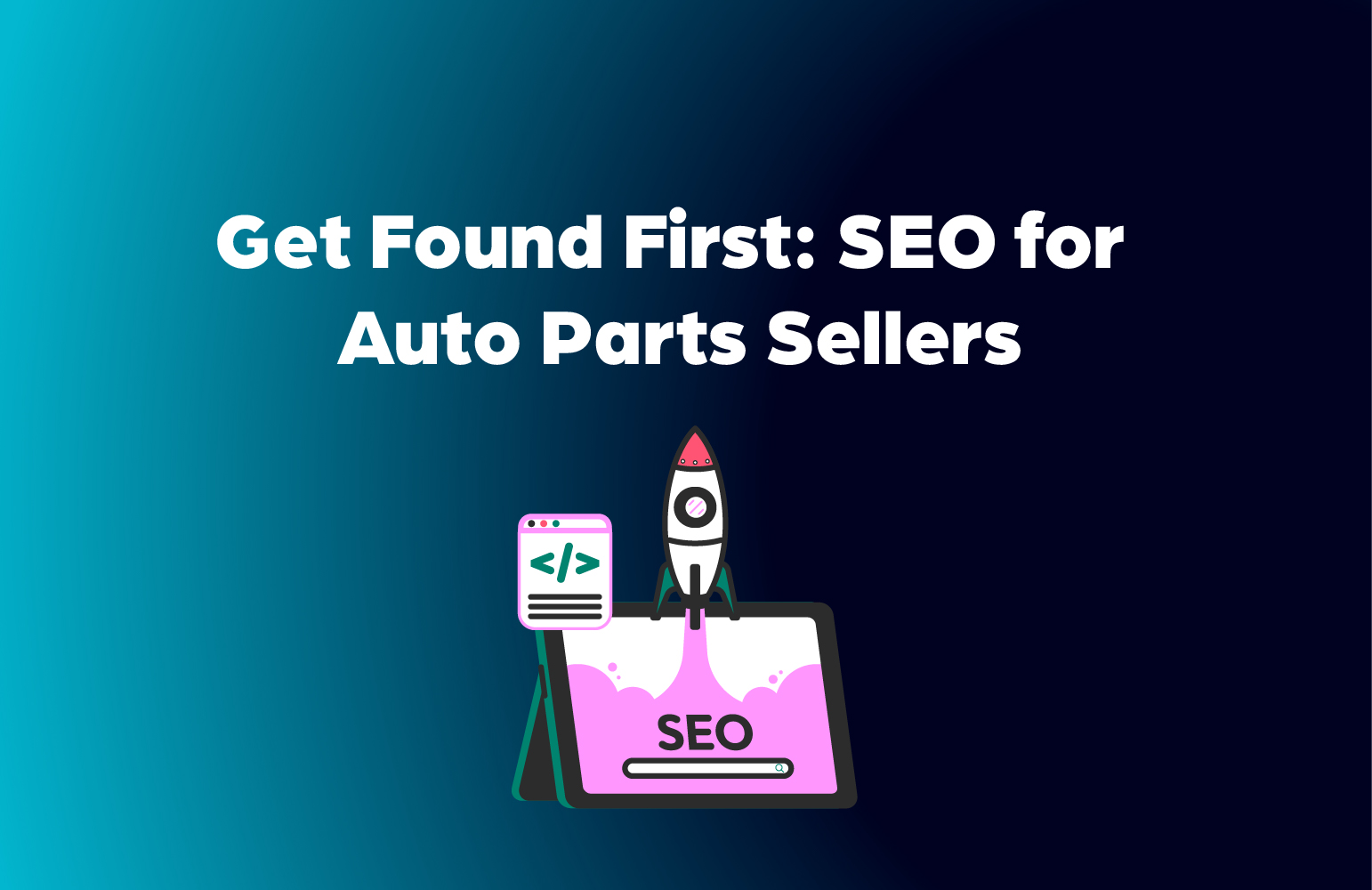If no one can find your products, they won’t sell — no matter how good they are
Auto parts ecommerce is more competitive than ever. Whether you’re selling brake pads for BMWs or filters for Ford trucks, chances are someone else is listing the same part — sometimes at the same price.
So how do you stand out?
The answer is search engine optimization (SEO). But unlike fashion or home decor, SEO for auto parts has its own challenges: long-tail keywords, vehicle fitment, duplicate listings, and complex catalog structures.
In this article, we’ll walk you through how to optimize your auto parts listings for search engines, with practical strategies to help your products get found — and bought.
1. Start with clean, consistent product titles
Search engines (and shoppers) rely heavily on product titles to understand what you’re selling.
A weak title like “Brake Disc 12345” tells Google nothing useful. A strong title like:
“Front Brake Disc for BMW 3 Series (F30) 2015–2019 | ATE 24.0123-0156.1”
…includes product type, vehicle compatibility, brand, date range, and part number — all valuable keywords.
Tips:
- Stick to a clear format across all products
- Avoid stuffing keywords unnaturally
- Use both common and technical terms (e.g. "brake disc" and "rotor")
2. Use meta titles and meta descriptions wisely
Meta titles and descriptions are what show up in Google search results. They're often overlooked — but they directly affect click-through rates.
Example of a strong meta title:
Front Brake Disc BMW 3 Series 2015–2019 | ATE Part 24.0123-0156.1
Meta description:
High-quality ATE front brake disc compatible with BMW 3 Series (F30) 2015–2019. OE replacement. Fast delivery and secure checkout.
Best practices:
- Keep meta titles under 60 characters
- Include your main keywords naturally
- Write descriptions that help the user, not just search bots
3. Add structured data (schema) to product pages
Search engines love structured data — and so should you. Adding schema markup to your product listings helps Google understand:
- Product name and type
- Brand and part number
- Price and availability
- Reviews and ratings
This can also trigger rich results (like review stars or pricing info) in search results, which boosts visibility and clicks.
Use JSON-LD format or plugins to add schema, depending on your ecommerce platform.
4. Write detailed, unique product descriptions
Copying manufacturer descriptions is easy — but it won’t help you rank. Why? Because hundreds of other sellers are doing the same thing.
Google prioritizes unique content.
That means writing your own descriptions that:
- Explain key features and specs
- Mention compatible makes, models, and years
- Highlight OE/OEM/aftermarket differences
- Answer common buyer questions
Bonus: A well-written description builds trust and reduces return rates.
5. Use high-value keywords in strategic places
It's not just what keywords you use — it's where you place them.
Make sure your main keywords appear in:
- Product title
- Meta title and meta description
- H1 and subheadings (where applicable)
- Image alt text
- First 100 words of your product description
- URL slug (e.g.
/bmw-front-brake-disc-ate-2015-2019)
Avoid over-optimization — make it readable for humans first.
6. Optimize for vehicle-specific search behavior
Most buyers don’t search for “brake disc.” They search for:
- “brake disc BMW F30”
- “front pads Audi A3 8V”
- “oil filter Peugeot 208 1.2 PureTech”
- “ATE 24.0123-0156.1 replacement”
That’s why you need to include:
- Make, model, and engine variant
- Production years
- Common search patterns (F30, MK5, etc.)
- Part numbers — OE, OEM, and aftermarket references
The more specific you are, the better your chances of ranking — and converting.
7. Compress and tag your images
Images aren’t just for looks — they also impact SEO and site speed. Slow-loading images hurt your rankings, and missing alt text is a missed opportunity.
Checklist:
- Compress all images for fast loading
- Use descriptive filenames (e.g.
bmw-brake-disc-ate.jpg) - Add alt text with keywords, e.g. “ATE front brake disc for BMW F30”
- Avoid generic names like
image123.png
This helps search engines (and shoppers with image-based searches) find your listings more easily.
8. Link strategically across your site
Internal linking helps Google understand your site structure — and keeps users browsing longer.
Examples of good internal links:
- Link product pages to relevant blog posts (e.g. “How to Choose the Right Brake Discs”)
- Link to vehicle guides (e.g. “View all compatible parts for BMW F30”)
- Suggest alternative products or bundles
External backlinks also help — but internal links are the easiest place to start.
Why this matters: SEO drives long-term traffic — and revenue
Auto parts listings don’t need to go viral. They just need to show up when someone searches for the exact part you sell. That’s what SEO does — it brings the right buyers to the right product, at the right moment.
The best part? Unlike ads, SEO keeps working long after you hit publish.
Final thoughts: Small changes, big visibility
You don’t need to be an SEO expert to see results. Start small:
- Clean up a few product titles
- Rewrite key descriptions
- Add schema to your bestsellers
- Use keywords your customers are actually typing
Over time, these small changes build up to real gains in traffic, visibility, and conversions.
In a crowded market, ranking higher isn’t optional — it’s the edge that keeps you selling.
FAQs
Should I include OE or OEM part numbers in listings?
Yes. Many users search by OE or OEM references. Including them improves both search visibility and buyer confidence.
What’s the best SEO tool for auto parts?
Use keyword tools like Ubersuggest or Ahrefs to find search terms. For on-page SEO, Google Search Console is essential. Many ecommerce platforms also offer built-in SEO plugins.
How often should I update my product SEO?
Focus on your top-performing (or underperforming) products first. Update meta info, descriptions, and images every few months — or whenever catalog changes happen.


